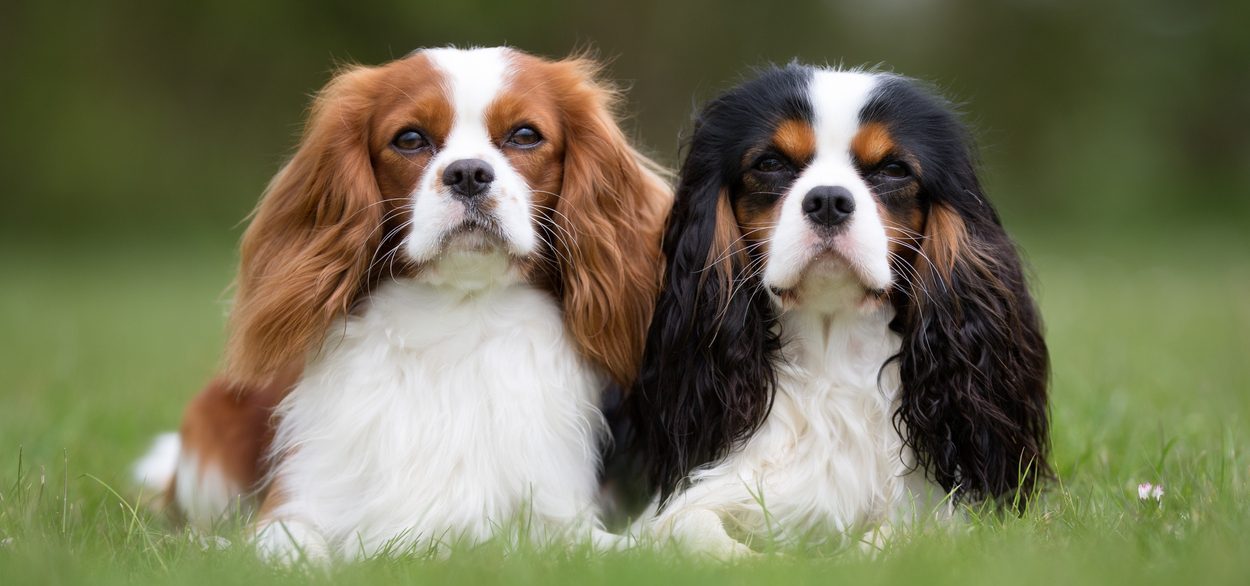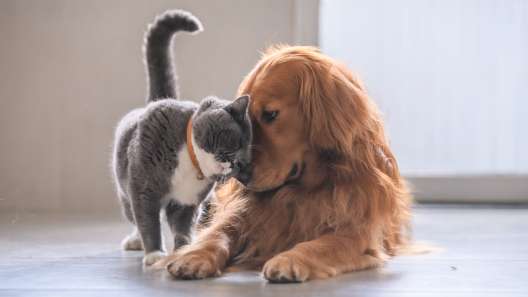-
Activity Level:
low
-
Shedding Level:
moderate
-
Grooming Level:
moderate
-
Trainability:
high
-
Good for Novice Owners:
high
-
Adaptability:
high
-
Kid/Pet Friendly:
often
-
Prey Drive:
moderate
-
Watchdog:
aware
- Average Size: Small
- Average Lifespan: 12-15 years
- Registered?: aca, akc
Cavalier King Charles Spaniel Dog Breed Information
Overview
Temperament
Adaptability
Health
Owner Experience
Grooming
Activity Level
Size
Life Span
Did You Know?
The Cavalier King Charles Spaniel originated in the United Kingdom. This dog breed is often confused with the English Toy Spaniel, which is called the King Charles Spaniel in the UK. While they share a similar history, they are not the same dog breed. The Cavalier King Charles Spaniel is slightly larger than the King Charles Spaniel and has higher-set ears, a flatter skull, and a longer muzzle.
Toy spaniels were a favorite among early 19th-Century British aristocracy. The Marlborough family of Blenheim Palace bred a line of red-and-white spaniels. These were later crossed with Asian toy breeds to create the English Toy Spaniel breed, which is called the King Charles Spaniel in the UK. The more traditional spaniel that the Marlborough family bred was almost extinct as the newer Toy Spaniel breed became more popular.
In the 1920s, toy spaniel fanciers saw paintings featuring the old-type toy spaniel breed in noble English manors. Roswell Eldrige, a wealthy American, offered British breeders a cash prize for “Blenheim Spaniels of the Old World Type”. This accelerated the preservation of the old-type toy spaniel breed and dogs from these lines are called Cavalier King Charles Spaniels.
Cavalier King Charles Spaniels were first recognized by the AKC as toy dogs in 1945 and were fully recognized as a member of the Toy Group in 1995. They are one of the smallest dog breeds and are a popular companion breed in the United States.
Cavalier King Charles Spaniels are one of the most affectionate dog breeds. Well-socialized Cavaliers tend to be friendly, sweet, and obedient dogs. They get along well with children, other dogs, and other pets. This makes them fantastic companions and one of the great dog breeds for large families.
Provided they are socialized well, they are even open and friendly with strangers. They can be prone to alert barking and can bark a lot depending on how much the behavior is encouraged. It’s not a bad idea to train your dog to stop barking to keep it to alerts only and not nuisance barking.
Cavalier King Charles Spaniels are highly adaptable dogs. They do well in homes with yards as well as apartments. Provided they get enough attention, mental stimulation, and exercise, they are just happy to be where you are.
They do well in most climates, but are sensitive to the cold and very sensitive to heat. Although they are not considered hunting dogs, Cavalier King Charles Spaniels do have the urge to chase and have even been known to chase cars. Because of this, it is recommended to only let them off-leash in secure areas.
Because these dogs bond so closely with their families and thrive on affection and attention, they do not like to spend long periods of time alone. As a companion breed through and through, they can also be prone to developing separation anxiety if you do not work with them early on.
Potential health concerns to be aware of in Cavalier King Charles Spaniels are Mitral Valve Disease (MVD), Syringomyelia (SM), middle ear infections, cataracts and other eye conditions, patellar luxation, and hip dysplasia.
Mitral Valve Disease starts as a heart murmur and worsens until it becomes heart failure. Although heart disease is common in older dogs of any breed, Cavaliers may be prone to developing it at an earlier age.
Syringomyelia affects the brain and spine and is often caused by a skull malformation that reduces the space available for the brain. It can result in symptoms ranging from mild discomfort to partial paralysis and severe pain. Good breeding practices and screening make a big difference in the health of puppies.
Reputable breeders will screen their dogs to make sure they are not passing preventable issues to puppies. Make sure you ask about the health and genetic history of both parents and about any health tests or clearances that have been done. The national breed club recommends a patella evaluation, a hip evaluation, a cardiac exam, and an ophthalmologist evaluation at a minimum.
Cavalier King Charles Spaniels are one of the best dog breeds for first-time owners. These little dogs are intelligent and eager to please, so they pick up on things quickly and strive to meet expectations. With their intelligence, gentle nature, and drive to please, they tend to be a good fit for dog owners of any experience level.
Cavaliers tend to be sensitive and gentle with soft personalities, which makes them sensitive to tone of voice. They do best with consistent training focused on rewards and praise. Raised voices or negative feedback can damage your bond and send these sensitive pups into hiding or into a sulk.
One of the facts about Cavalier King Charles Spaniels is that their coat comes in four colors – Ruby, Blenheim, Black and Tan, and Tricolor. They have a long, silky coat with some waviness to it. They shed moderately and will shed more heavily as seasons change. Their coat needs to be brushed a few times a week to remove tangles, prevent mats, and remain healthy, and they require occasional bathing. Daily brushing during seasonal shedding is recommended.
In addition to coat care, you will also need to take care of your Cavalier King Charles Spaniel’s nails, ears, and teeth. Nails should be trimmed once or twice monthly. Ears should be examined weekly and cleaned carefully as needed. Brushing your dog’s teeth daily and cleanings at the vet when needed are basic dental care.
The Cavalier King Charles Spaniel tends to sit in a low to moderate activity range. They will be energetic when they play, but will tire themselves out. Daily walks plus some playtime are usually enough for these small dogs. They love spending time with you though, so will often be up for more activity if you are.
Although they are known companion breeds and can be one of the laziest dog breeds, they are also descended from sporting dogs. Cavaliers tend to excel at several dog sports including rally, flyball, agility, obedience, and more.
Provided puppies are finished growing and they have been cleared for it by the vet, Cavaliers can be a great fit for agility training. They also make great therapy dogs and emotional support dogs.
Fully-grown Cavalier King Charles Spaniels usually stand 12-13 inches tall and weigh 13-18 pounds.
Cavalier King Charles Spaniels generally live 12-15 years on average.
The Cavalier King Charles Spaniel got its name from a mix of King Charles I and snarky historical references. This dog breed was a favorite of King Charles I. The Cavalier name is a nod to the monarchist party that supported the Stuarts during the civil war that would result in the beheading of Charles I.









